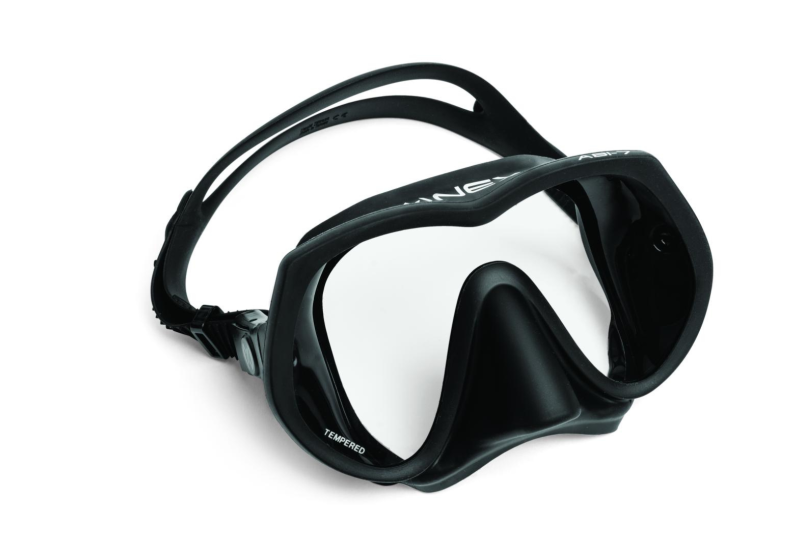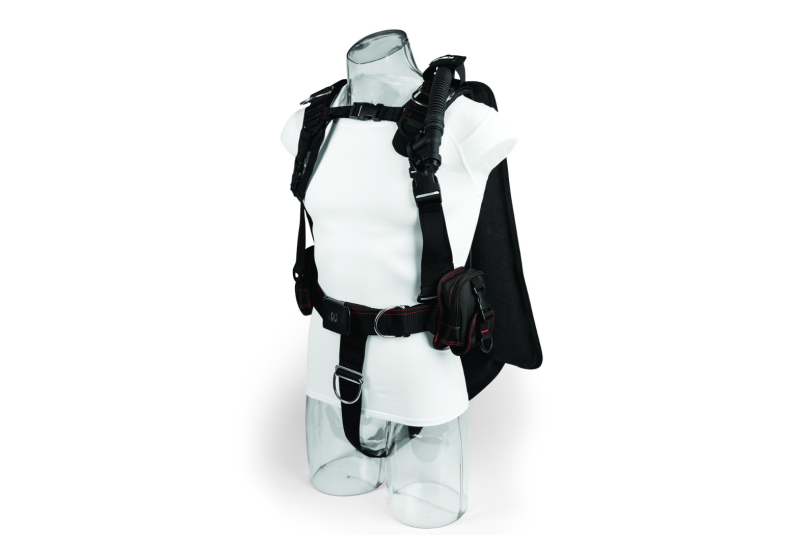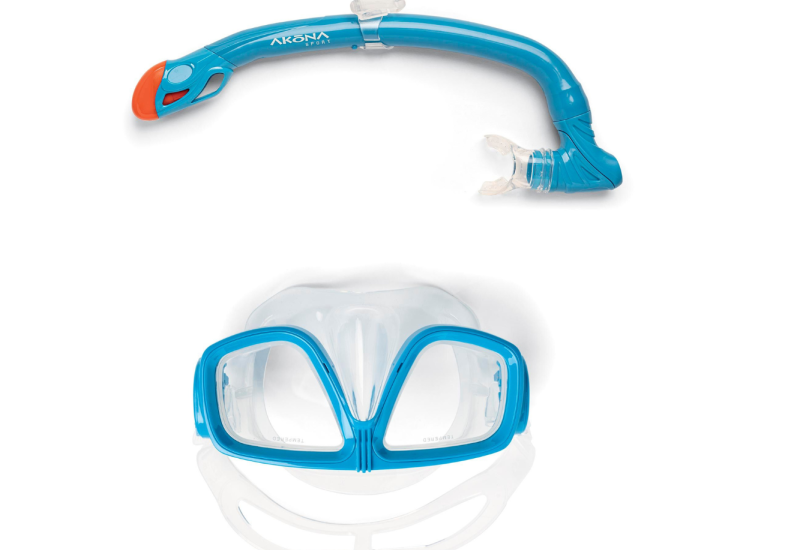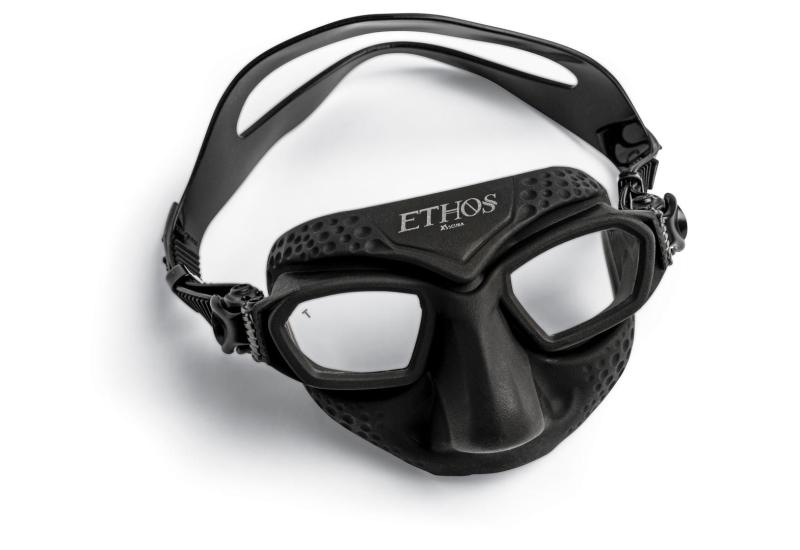ScubaLab - Masks - The View
|August 2009 Issue Scuba Lab Review Quick Links|
|---|
|Single Window Masks|
|---|
| Mares Essence Liquidskin| SCUBAPRO Solo|
| Sherwood Rona| Tusa M-17 Concero|
|Dual-Window Masks|
|---|
| Aeris Duo| Aeris Recon|
| Aqua Lung Look 2| Cressi Big Eyes Evolution|
| Oceanic Pioneer| SCUBAPRO Spectra 2|
| Scubamax Spider Eye| Sherwood Eclipse|
|Three- & Four-Window Masks|
|---|
| Aeris Europa 3| Aqua Lung Infinity|
| BARE Trio C| Oceanic ION 3x|
Why do we go underwater? For some it’s the adventure, for others the sensation of weightlessness, but for nearly all the reason includes seeing some really cool stuff. That’s why the mask is such a critical part of a diver’s rig. A good mask provides so much field of view, fits so comfortably and works so well, you forget it’s even there. On the other hand, a bad mask hurts your face, fogs up and fills with water every six seconds. Perhaps more than any other piece of gear, a mask can make the difference between an unforgettable dive experience and 45 minutes of underwater torture. You’d think that after more than a half-century of mask development manufacturers would be running out of new ideas. But much to the glee of divers everywhere, each year we’re introduced to new lens shapes, softer skirt materials and more innovative buckle systems. We called on mask manufacturers to send us their freshest models; we received 18 new or improved designs. After checking out each mask in the ScubaLab shop, noting materials, design features and how the buckle systems worked, we took them into our test pool to measure their field of view, both vertically and horizontally. We then set out to dive each mask to see how well they fit, felt and behaved in the real world. We’ve divided our findings into three categories by mask type: single-window, dual-window, and three- and four-window. The single-window mask is where it all started, but design innovations have made these masks lighter, lower volume and most recently, frameless. This is probably the most popular advancement made in the single-window design in many years. Case in point: All single-window masks submitted for this year’s review are frameless. The benefits of a single-window design are lower volume, above-average field of view, and since the buckles are now mounted directly to the skirt, they fold flat for packing. Before single-window masks evolved into their modern form, it was the two-window mask that had the lowest volume — and some of the most compact masks on the market today are still dual-window styles. Their biggest benefit is their ability to accept corrective lenses. (While prescription lenses can be installed in any mask, they lend themselves better to the two-window design.) Many also offer skirt-mounted buckles that flex to match strap angle, making them less likely to break if dropped and allowing them to fold flat for packing. Finally, there are the three-and four-window masks. These use side windows to let in more light and produce a truly open feel, which is great for divers prone to claustrophobia. More important, they substantially increase peripheral vision, however, this benefit comes with a cost. While the intersection of lenses appears seamless at the surface, it creates blind spots and distortion at depth. Depending on the diver, this can be either a minor irritant or a major aggravation.
| August 2009 Issue Scuba Lab Review Quick Links |
|---|
| Single Window Masks |
| --- |
| Mares Essence Liquidskin| SCUBAPRO Solo |
| Sherwood Rona| Tusa M-17 Concero |
| Dual-Window Masks |
| --- |
| Aeris Duo| Aeris Recon |
| Aqua Lung Look 2| Cressi Big Eyes Evolution |
| Oceanic Pioneer| SCUBAPRO Spectra 2 |
| Scubamax Spider Eye| Sherwood Eclipse |
| Three- & Four-Window Masks |
| --- |
| Aeris Europa 3| Aqua Lung Infinity |
| BARE Trio C| Oceanic ION 3x |
|August 2009 Issue Scuba Lab Review Quick Links| |---| |Single Window Masks| |---| | Mares Essence Liquidskin| SCUBAPRO Solo| | Sherwood Rona| Tusa M-17 Concero| |Dual-Window Masks| |---| | Aeris Duo| Aeris Recon| | Aqua Lung Look 2| Cressi Big Eyes Evolution| | Oceanic Pioneer| SCUBAPRO Spectra 2| | Scubamax Spider Eye| Sherwood Eclipse| |Three- & Four-Window Masks| |---| | Aeris Europa 3| Aqua Lung Infinity| | BARE Trio C| Oceanic ION 3x| Why do we go underwater? For some it’s the adventure, for others the sensation of weightlessness, but for nearly all the reason includes seeing some really cool stuff. That’s why the mask is such a critical part of a diver’s rig. A good mask provides so much field of view, fits so comfortably and works so well, you forget it’s even there. On the other hand, a bad mask hurts your face, fogs up and fills with water every six seconds. Perhaps more than any other piece of gear, a mask can make the difference between an unforgettable dive experience and 45 minutes of underwater torture. You’d think that after more than a half-century of mask development manufacturers would be running out of new ideas. But much to the glee of divers everywhere, each year we’re introduced to new lens shapes, softer skirt materials and more innovative buckle systems. We called on mask manufacturers to send us their freshest models; we received 18 new or improved designs. After checking out each mask in the ScubaLab shop, noting materials, design features and how the buckle systems worked, we took them into our test pool to measure their field of view, both vertically and horizontally. We then set out to dive each mask to see how well they fit, felt and behaved in the real world. We’ve divided our findings into three categories by mask type: single-window, dual-window, and three- and four-window. The single-window mask is where it all started, but design innovations have made these masks lighter, lower volume and most recently, frameless. This is probably the most popular advancement made in the single-window design in many years. Case in point: All single-window masks submitted for this year’s review are frameless. The benefits of a single-window design are lower volume, above-average field of view, and since the buckles are now mounted directly to the skirt, they fold flat for packing. Before single-window masks evolved into their modern form, it was the two-window mask that had the lowest volume — and some of the most compact masks on the market today are still dual-window styles. Their biggest benefit is their ability to accept corrective lenses. (While prescription lenses can be installed in any mask, they lend themselves better to the two-window design.) Many also offer skirt-mounted buckles that flex to match strap angle, making them less likely to break if dropped and allowing them to fold flat for packing. Finally, there are the three-and four-window masks. These use side windows to let in more light and produce a truly open feel, which is great for divers prone to claustrophobia. More important, they substantially increase peripheral vision, however, this benefit comes with a cost. While the intersection of lenses appears seamless at the surface, it creates blind spots and distortion at depth. Depending on the diver, this can be either a minor irritant or a major aggravation.
| August 2009 Issue Scuba Lab Review Quick Links |
|---|
| Single Window Masks |
| --- |
| Mares Essence Liquidskin| SCUBAPRO Solo |
| Sherwood Rona| Tusa M-17 Concero |
| Dual-Window Masks |
| --- |
| Aeris Duo| Aeris Recon |
| Aqua Lung Look 2| Cressi Big Eyes Evolution |
| Oceanic Pioneer| SCUBAPRO Spectra 2 |
| Scubamax Spider Eye| Sherwood Eclipse |
| Three- & Four-Window Masks |
| --- |
| Aeris Europa 3| Aqua Lung Infinity |
| BARE Trio C| Oceanic ION 3x |










